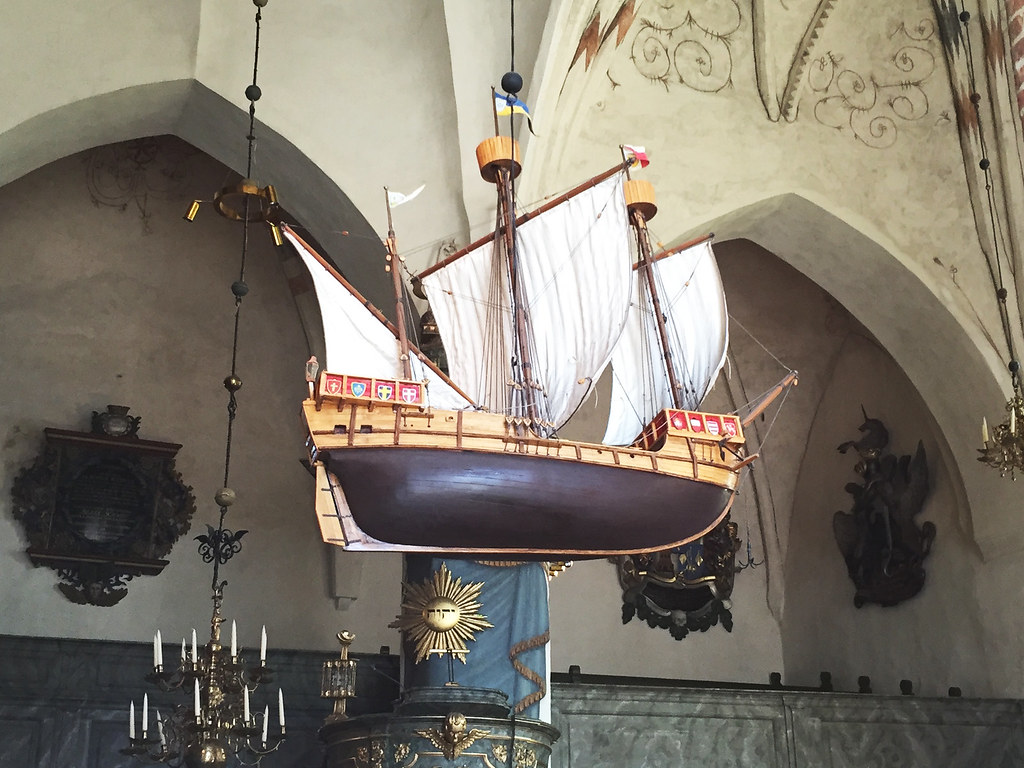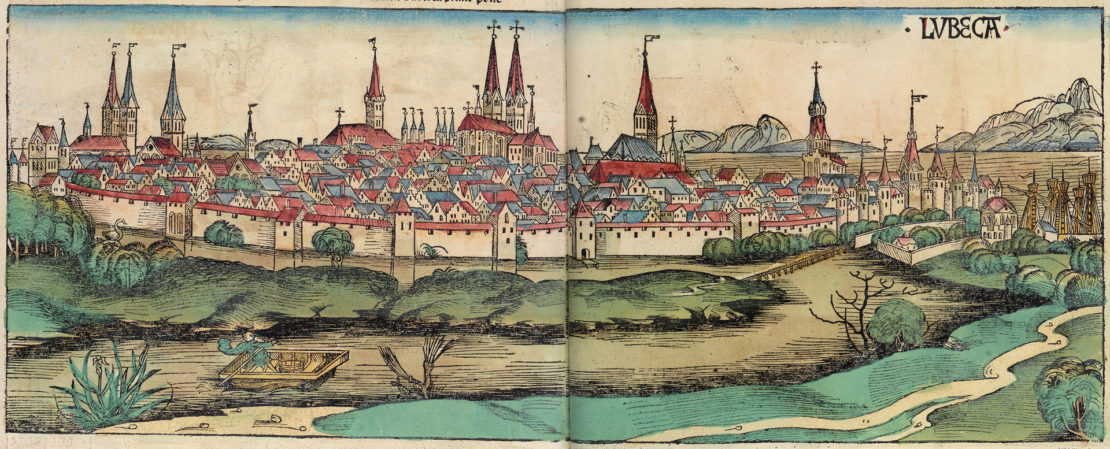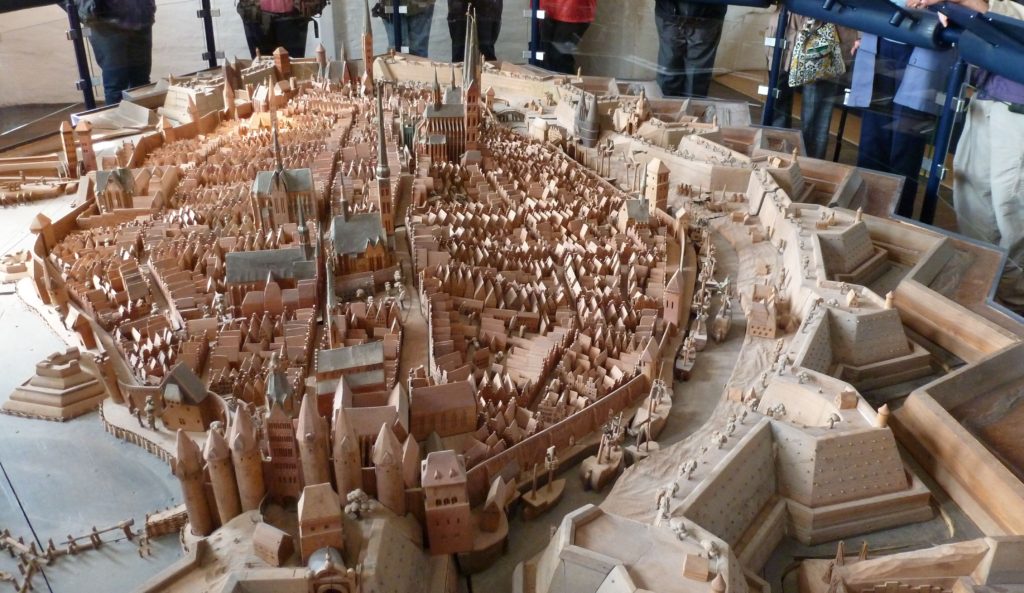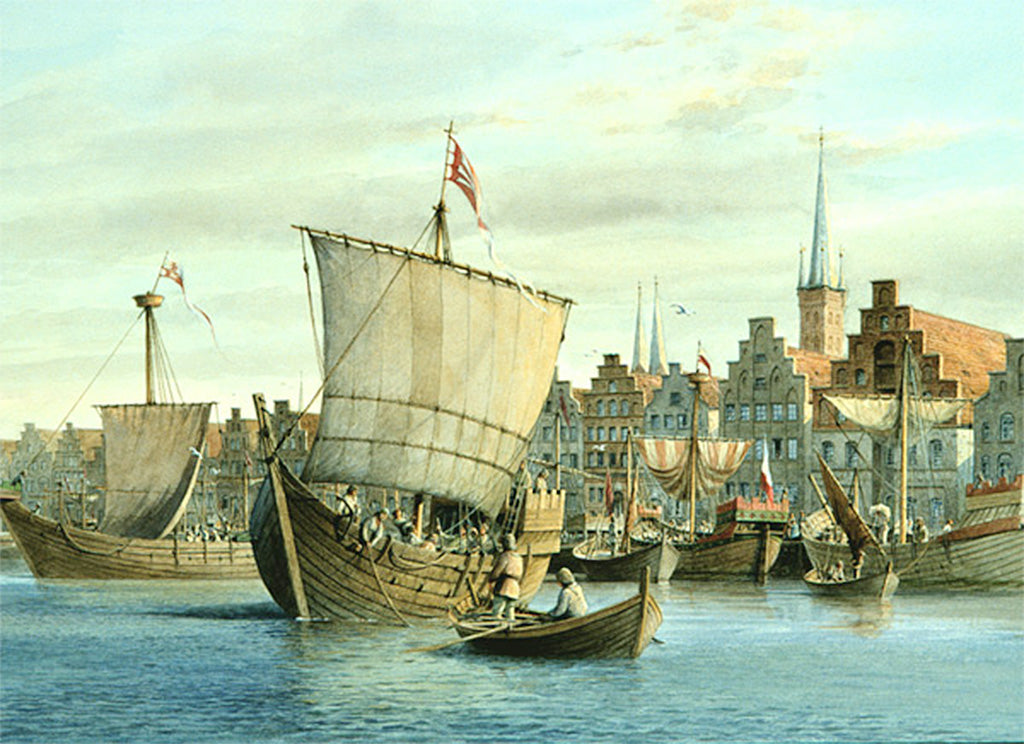VOTIVE MODELS: What’s a Votive Model? A Journey of Remembrance
In 1996 I knew my days in Europe and Germany were numbered. I knew we were deploying (for many months) to the training centers very soon to ready ourselves for a large scale deployment to Bosnia. In addition to being a M109A2 Howitzer Platoon Leader I was also the partnership officer for my Battalion and the Movement Control Officer for the 2nd Brigade, 1st Armored Division “Old Ironsides”. I wasn’t fluent in German yet but I was close. My conjugation was still off and I would substitute a quick sloppy “eh” on the endings of words when I didn’t know if an “er” was appropriate or not.
However, I was the best they had as very few Americans spoke any German at all. I had been the partnership officer in my last unit in Fulda (1st Squadron, 11th Armored Cavalry Regiment (ACR)) and now I was tagged again. It wasn’t because of any other particular ability but that I could speak the language fairly well. I was confident in my abilities to get around Germany and Austria after five years living there. I had been complemented many times by Germans who told me they didn’t even realize I was an American.
I was actually scared. I was a senior 1st Lieutenant with a LOT of experience. I was due to make Captain in a few more months and this was actually my third platoon – most young officers only ever got one. I was scared because I had already been in some training exercises with a bunch of young Germans in a place called Hammelburg. We were attempting to train them on rooting through urban areas trying to find the bad guys while rescuing the innocent women and children.
The Germans didn’t play – during almost every exercise STX lane, at the drop of a hat, they would open fire on the poor woman holding a baby every time. They just had never been trained to hold back. I would learn in a very personal way a couple of months later that sometimes it is better to shoot first and ask questions later.
I was scared that I was responsible for coordinating the movement of so much heavy military equipment so far away. It was a huge amount of responsibility for someone so young. I look at my own sons now and I can’t believe that I was their age when I carried upon my shoulders some of the heaviest responsibilities of my career.
In addition we had been briefed and taught how to deal with millions of mines that we were told we would encounter when we got into country. Despite all of this I knew I had a few more weeks before my life would change forever. I had a tiny little window of freedom left. I had dragged my family all over Europe when I took leave. We had gone everywhere. Just the year before, my best friend had come over from the States and we explored dozens of ruins and castles, hiked into the Alps and visited Italy. My unit leadership had felt guilty because I had been in the field so much and gave me 45 days leave all in one pop. I made the best of it.
My young kids were so great on these trips. They were always so well behaved in museums and sacred sites. We visited castle after castle and cathedral after cathedral – ruin after ruin – as a family.
This time however, I needed to go alone. First of all, my funds were limited and its expensive to travel with an entire family. Second my time was limited. I only had a few days of leave this time in conjunction with a weekend. My wife understood. She knew my love of history and she also knew she didn’t feel up to the whirlwind trip I was planning – especially after the others we had just finished a month before.
We had a giant map in the Kitchen hallway and me and the kids would put colored pins in it to show off all of the places we had been. The middle of Europe was really filling up with pins. We had been all over France, Belgium, the Netherlands, Germany, Switzerland, Italy, Austria, the Czech Republic and Poland.
I knew this would be the last chance I had to see some things I had always wanted to see. I had studied the famous King and General – Frederick the Great for years and he was one of my favorite generals. I had the opportunity at one point to read an original version written in French of his guide on tactics published for his own staff officers to read.
I remember I was so completely shocked when I found it gathering dust on an out of the way shelf in the military archival library at Headquarters, Building 6, Fort Benning, Georgia. A frail thin little book from the 18th century just sitting there on the shelf – not a copy or reprint! I thought about just taking it. No one would have ever missed it. But I am not a thief and I took my responsibilities as a young officer to never “lie, cheat, or steal” very seriously.
After I had devoured it myself, I went to the chief librarian and complained. I told him that this was something that should not just be sitting on the shelf for anyone to take. It was a piece of history and it should be preserved or at the very least put in some special protected reference section. He took it, looked it over and agreed. If I HAD been a thief I think I could have been a rich man with a pamphlet so rare. Wonder how much it would fetch at auction.
I’ve always liked the underdogs and my admiration for Frederick was so great (Stonewall Jackson’s inspiration for “Foot Cavalry”), that I had always wanted to visit some of the battlefields in Silesia he had fought upon – but more importantly I wanted to visit his refuge Sans Soucci (Without Care). I was also a great admirer of Gustavus Adolphus and I had never visited the great old battlefields at Lutzen OR Luethen. I had also never visited Wittenburg and wanted to see the church door where the 95 Thesis was nailed, sparking the bloodiest two hundred and fifty year period in history – the Reformation. I also wanted to see the cities of the Hanseatic League. So I was absolutely determined to get to northern Germany while I had the chance.
So in a little less than a weeks time with me sometimes spending the night in farmers fields setting against (or on) old battlefields, I was able to walk the ground at first light of these great bloody places and imagine the carnage. One night I swear I heard the ghosts of the past on the old Napoleonic battlefield outside of Leipzig. I saw Wittenburg, Potsdam, San Soucci/Charlottenburg, Berlin, Bremen, Lubeck and Hamburg.
Sans Souci was wonderful. It was like going into a fantasy land almost frozen in time. At one end of an extremely large square expanse of paths and gardens was the huge Charlottenburg palace – at the other end opposite a pretty little baroque palace on a hill with a dozen or more French doors. It was charming (Sans Souci). In between and along the borders of the gardens were wonderful overgrown faux Roman ruins replete with water features, an aqueduct, etc. – there was a little fake Carolingian monastery and an old Roman villa. I expected to see a white rabbit somewhere in between and I virtually had the whole place to myself. I encountered a small hand full of visitors at Charlottenburg, but that was it.



Potsdam was awesome. I felt like I had found a giant piece of old Amsterdam or some place in Holland just plucked right out of the earth and plopped down in Northern Germany. In fact they call that part the Dutch Quarter. It’s a really cool old historic town with an immense amount of history to uncover. I was so sad I didn’t have more time to explore. I did a quick drive through of Berlin as well. I stopped at the Brandenburg Gate and then headed to what was left of the Berlin Wall. It hadn’t been that long since it had come down, but there were only a dozen or less concrete slabs left – and they were covered in colorful spray painted graffiti. I managed to chip off a small piece as a souvenir when no one was watching. I looked down into a giant pit that seemed to go on for miles in either direction where the wall had been. Massive construction was going on. I had no idea there was so much underneath it.
/about/146378397-56a3ad643df78cf7727e8e30.jpg)


Lubeck however, impressed me more than any other place on this trip. It was amazing – and here is where I spent the most time. I was just spell bound. It was the former capital of the great Hanseatic League – the hegemonic trading and banking confederation of free cities that dominated trade before the rise of the Netherlands. In the museum I poured over a huge old wooden model of Lubeck from the 1400s. I was MORE than impressed. This was one of the most fortified cities I had ever seen – and I had walked the perimeters of many of these places and seen many more in old illustrations.
Lubeck had to be fortified given its wealth and the turbulent violence often occuring around it. The German Emperor had given it “Free City” status. Lubeck became the kingpin city in the confederation of rich trading cities known as the Hanseatic League. These were the richest cities in the world at the time. These were great maritime cities with fortified harbors. All the goods of Northern Europe and beyond flowed out of these great cities that went as far as the Low Countries.
….and here is where I discovered the subject of this piece – VOTIVE MODELS. Being a great old maritime city with many great ships in its past I should have expected to see something of this history displayed. I had seen ship models in the museums and was impressed, but I had no idea that this past would still be preserved so well in other places. I hadn’t even gone into the church yet when I wandered into an old pub in Lubeck to get something to drink.


There hanging from the high wide ceiling beams of the ancient beer hall were ship models – all over the place. I was spellbound and began to take pictures. I hadn’t seen anything like that in the Dutch pubs although I had seen a few models in the Dutch churches.
When I went to the surrounding churches and cathedrals, it was the same thing – wonderful very old ship models hanging from the ceilings. More pictures were in order. In the Lubeck Cathedral I also found a really neat old rendering of the “Totentanz” Dance with Death. This so inspired me that I began researching this old subject and started putting a book together about the renderings – yet another I have yet to publish and I have so much good material I’ve collected. I even captured the little poems in my story about Piet Heyn. The old Grave digger recites a poem about the dance with death. I made this poem up completely on my own but it reflects the meaning of the non-English ones I have found.

So these votive models are usually a phenomena you will encounter in Northern Europe but I understand some places in Spain, France and the UK also have them. They are amazing and they are of every quality – from rough almost folk art pieces to exacting replicas with every detail. One can really learn a lot about the ships of those times simply from studying the models. I wished I could get up on ladders and look down at the ships decks and see them up close. No such luck but there are so many images of them on the internet now that many excellent examples can now be seen.
The Wikipedia page on them says they are confined to churches, but doesn’t consider they are also found in pubs as well. Also it doesn’t say WHY they were made. I have not found anything to back up my suspicions here, but I will make a historical hypothesis and say that seamen gave them to churches as representations of actual real ships so that blessings and prayers could be said – both for ships on journeys and in danger – and also as memorials of remembrance for the souls lost on ships that never made it home. Here’s what Wikipedia has to say on the matter. https://en.wikipedia.org/wiki/Votive_ship
So I will get to the meat of the matter now and allow you to feast your eyes on some of the awesome photos of votive models I’ve found. Unfortunately I’ve never been able to find the pictures I took back in 96. This was before the age of digital cameras where you still had to take film into the store to be developed. I have a couple of large boxes full of nothing but old photos from my travels – one of these days I will go through them. Here’s some images of Votive Models:



Look at this one. Blood flag on the tafferel and Lion of Holland on the mainmast. COOL!




Another Dutch one from Alkmaar Cathedral. Check out that Blood Flag!

























Really neat eh?!
I wonder how many of you had never seen or heard of these models.
Anyway, my trip back was uneventful, just stopping to take meals. I remember thinking on my way back how much I was going to miss my trips driving in Europe and I was right. Bosnia was a disaster for my outfit. I did a great job getting our equipment down to Pecs Hungary, but the rivers were so swollen we couldn’t do anything. The bridges were quite literally medieval and so we started to build our own. Initially one of the generals got the bright idea of trying to cross the Sava river using the fording kits on the Bradley fighting vehicles. That was a disaster. Damn things flipped over in the drink and drowned a bunch of poor guys.

Once we got in we had no tank support because the roads couldn’t handle them and everything was water-logged. I felt so guilty because I had orders to leave to go back to my advanced course since I was being promoted to Captain. Just as all the fun was beginning with mines blowing off guys legs and snipers shooting friends I had known a long time, I got direct permission from the General that I could leave. He reminded me before I left that he could F**k me if he wanted to and make me stay – but that I had been a “good guy” so he was gonna let me leave….. and back I came.

After I got back I was told that a lot of bad things happened in my outfit. My partner in crime through thick and thin – a senior black Sergeant First Class, went nuts after I had left. We called our chiefs of Firing batteries – “Chief of Smoke” or “Smoke for short”. Most of the men would address him that way because it was like a title.
A conversation might go, “What the hell you think your doin son? That .50 is not correctly oriented to the sector on your range card? Do you require some remedial training soldier?” response, “No smoke, sorry smoke (pointing the weapon onto the sector correctly), I got it!”
Me and him were the perfect team. We knew what one another was thinking and had the highest regard and respect for one another. His nick name back home on the block was “Junebug” and mine had been “Rock”. When we knew the men couldn’t hear us, I would call him Junebug and he would call me Rock. “what’s up Junebug?” “Oh nuttin much Rock.” One of the funniest things I ever heard was from him – he had a great sense of humor.
In the Army we have an old saying that whenever you’re tired in the morning or just can’t get going, it’s called “draggin ass”. One morning I saw he hadn’t gone out to check the gun line yet and it was almost light. I came up to his hummer and asked him “what’s up Junebug, why haven’t you gone out to the line yet?” He replied, “Sir, I got the Chinese disease this morning.” I chuckled not knowin what the hell he was talking about. “What the hell’s the Chinese disease Smoke?” He smiled and paused for a second and then said “You know, the Chinese disease – I got THE DRAGONASS cause I’m draggin ass!” Took me a second to put the joke together with the whole oriental dragon business, but I got it and laughed my ass off. I’ve used that joke ever since.
Junebug was found miles away at some lake. He was lucky he didn’t get his leg blown off because plenty of other men had with all of the mines everywhere. They found him fishing with a pole he had made himself and a bottle of Wild Turkey – how he got the hooch I will never know. Maybe he had brought it with him from Baumholder and kept it squirreled away for a special occasion. I heard they busted him and sent him back to the states. I should have volunteered to stay. I’ve always wondered what happened to him after that.
I’ve been back to Europe many times since then, but only for a few weeks at a time and mostly for work. It’s never had the same magic it did back when I was that young inspired leader of men. I thought I could do anything. Boy was I ever wrong.
I have found myself at times day dreaming about driving that old slightly beat up black 1987 Mercury Lynx 5 speed manual that I had bought for $600 dollars from a young soldier (a mechanic) who had worked for me and had orders to return to the US. That car was awesome – it ran perfect. I remember one time I got a flat tire in the middle of Austria and pulled off into what looked like a rest area. It was a historic site. No one was there. The signs pointed to this rock that was elevated above the ground on a little mound facing the road. The rock was not carved really. It had a sort of weird natural shape of a huge chair.
It was called the Königsthron and the explanation was that way – WAY back – German tribal chieftains would gather there and their highest leader would preside over a council of warriors and chieftains there. I sat in the seat and imagined. No one else was there. I thought to myself that a German tribal war chieftain from the dark ages or pre Christian era Sutton Hoo culture would never have been able to imagine the road that now ran in front of the old stone seat and would really never have been able to imagine my crappy old Mercury Lynx. I chuckled to myself imagining that I was the war chieftain – and then I walked back to my jalope and changed the tire.
I wish I were back on the autobahn in 1992 right now.
MK
Posted in Historical Sailing ships, Model Sailing Ships by modernknight1 with 2 comments.




